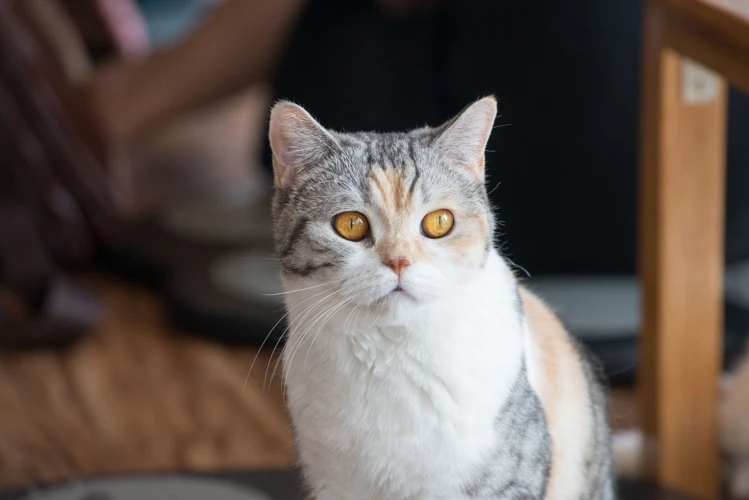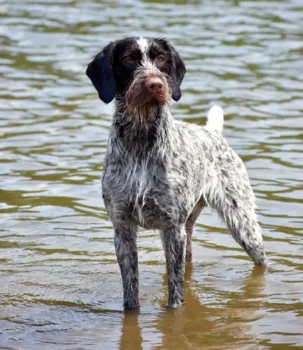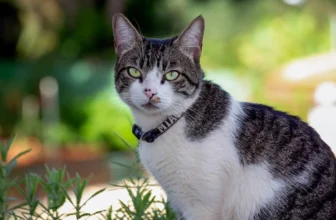Welcoming a new furry friend into your home can be an exciting experience, but the process of finding the right breeder and ensuring responsible breeding practices can sometimes be a challenge. If you are considering adding an American Wirehair to your family, it is important to know how to select a responsible breeder. In this article, we will outline the guidelines for responsible breeding of American Wirehairs, including tips on selecting breeding stock, healthcare, socialization, and facilities maintenance. By following these guidelines, you can help ensure that your new companion is a healthy, happy, and well-adjusted member of your family. So, let’s dive in and learn more about how to select a responsible breeder for your American Wirehair.
Why Responsible Breeding Matters

Every American Wirehair breeder needs to take responsibility for the health and welfare of their cats. Breeding cats for specific traits requires a lot of consideration and effort. As you embark on this journey, it is essential to understand why responsible breeding matters. In this section, we will explore three key reasons why you should prioritize responsible breeding of American Wirehairs: Maintaining Breed Standards, Preventing Health Issues, and Reducing Overpopulation and Unwanted Animals. Let’s delve into each of these areas and see why responsible breeding is critical to the success of your breeding program. For more information on breeding American Wirehairs, click the relevant internal links or visit our website’s breeder tips section.
Maintaining Breed Standards
Maintaining breed standards is an essential aspect of responsible breeding for American Wirehairs. Breed standards ensure that each American Wirehair cat is typical for the breed and is recognized as such. It is crucial to select only American Wirehairs with the desired traits and characteristics for breeding purposes. Breeding pairs should be chosen for their physical attributes, coat colors, and personalities that are in line with the breed standard.
To maintain the breed’s standards, understand and abide by the guidelines set by the American Wirehair breed organization. Follow their guidelines to ensure healthy, beautiful, and uniform kittens without straying from the standard.
One aspect of maintaining the breed standard is breeding only American Wirehairs with the correct coat colors. The Wirehair coat is thick, wiry, and springy, with stout hairs that stand straight or coil. The breed standard specifies that the coat can come in any color or color combination except for colorpoint, with or without white. It’s important to avoid breeding American Wirehairs outside of permissible colors or color combinations, as they won’t be recognized as part of the breed.
Another criterion for maintaining breed standards is to prevent breeding American Wirehairs with genetic diseases. Not all genetic diseases are testable, but responsible breeders should avoid breeding cats with known inherited health problems. Breeders must also be familiar with the genetic makeup of their breeding stock to prevent the production of affected kittens. Genetic testing for common health conditions is important before breeding American Wirehairs to preserve the breed.
Maintaining breed standards is essential to the vitality and recognition of American Wirehair cats as a breed. By selecting only cats with the desired physical attributes and avoiding breeding with known health issues, breeders can ensure that their American Wirehairs comply with and even exceed breed standard requirements.
Preventing Health Issues
Preventing Health Issues is an essential aspect of responsible breeding that ensures the long-term health and well-being of the American Wirehair breed. This requires breeders to take several steps to minimize the risk of genetic disorders and other health concerns that can develop if not addressed.
One of the most effective ways to prevent health issues in American Wirehairs is to conduct thorough genetic testing on both breeding parents before mating them. This will help identify any genetic mutations or diseases that could be passed on to the offspring. Additionally, selectively choosing breeding pairs that have a low risk of carrying genetic disorders can help to minimize the risk of health problems in future generations.
Another important factor in preventing health issues in American Wirehairs is to provide proper prenatal care. During the pregnancy stages, breeders should monitor the health of the pregnant cat closely. This includes providing proper nutrition and minimizing stress to reduce the risk of complications during pregnancy.
To ensure a high level of breeding success and prevent health issues, regular veterinary checkups are necessary. Routine health screenings can help detect any potential problems, such as infections, parasites, or dental issues, early on before they turn into serious health concerns. Additionally, breeders should stay up-to-date on vaccination and deworming schedules to ensure that their cats are protected against common viruses and parasites.
Understanding the genetics of the American Wirehair breed is also important for responsible breeding. Certain coat colors, for example, may indicate a higher risk of developing certain health issues. By keeping records of the coat colors and health histories of breeding cats, breeders can better understand the heritability of traits and adjust their breeding practices to mitigate risks of health issues.
Ultimately, preventing health issues in American Wirehairs requires a proactive approach and a focus on maintaining the overall health of the breed. By following these guidelines, breeders can ensure the long-term well-being of their cats and work towards a healthier future for the American Wirehair breed.
Reducing Overpopulation and Unwanted Animals
Responsible breeding plays a crucial role in reducing overpopulation and unwanted animals. Unplanned breeding often leads to unwanted litters, which result in animals being surrendered to shelters or abandoned on the streets. By following guidelines for responsible breeding, breeders can help address the problem of overpopulation and reduce the number of unwanted animals.
Here are some ways that responsible breeding can help reduce overpopulation:
- By carefully selecting breeding stock, breeders can control the number of litters produced and ensure that only healthy animals are being bred.
- Providing proper care, nutrition, and medical testing ensures that all animals live healthy lives, which reduces the risk of unplanned litters due to health issues.
- Making informed breeding decisions helps reduce the number of animals in shelters and on the streets. By considering factors such as temperament, energy level, and coat colors, breeders can ensure that their litters are well-suited for the families who adopt them, reducing the likelihood of returns or surrenders.
By taking these steps, responsible breeders can help prevent unwanted litters and decrease the number of animals that end up in shelters or on the streets. By doing so, they contribute to the overall well-being of the American Wirehair breed and help maintain the integrity of the breed standard.
If you want to read more about successful American Wirehair breeding and coat colors, follow these links: American Wirehair breeding success, American Wirehair coat colors.
Guidelines for Responsible Breeding
Breeding American Wirehairs can be a rewarding and fulfilling experience but it should also be approached with a sense of responsibility and care. To ensure that this beloved breed remains healthy and strong for years to come, breeders need to follow certain guidelines for responsible breeding. These guidelines cover everything from researching and selecting breeding stock to understanding the heritability of traits. By following these guidelines, breeders can ensure that their cats are healthy, happy and well-cared for. In this section, we will explore the various aspects of responsible breeding and what it takes to be a successful American Wirehair breeder. But before that, let’s understand why responsible breeding matters. Want to read more about Americn Wirehair breeding success? Check out our guide to successful breeding of American Wirehairs.
Researching & Selecting Breeding Stock
When selecting breeding stock for American Wirehairs, it’s important to conduct thorough research and choose animals that meet certain criteria to ensure optimal genetic health for the breed. Here are some key factors to consider when researching and selecting breeding stock:
| Criteria | Importance | Considerations |
|---|---|---|
| Health | High | Check for any genetic defects or health issues in the lineage of the potential breeding cats. Ensure that all animals are up-to-date on vaccinations and receive regular veterinary care. Conduct genetic testing to identify any potential issues and reduce the likelihood of producing offspring with genetic diseases. |
| Breed Standards | High | Ensure that the potential breeding cats conform to the breed standards set forth by cat organizations such as the Cat Fanciers’ Association (CFA) or The International Cat Association (TICA). This includes physical characteristics such as coat color, body type, and facial features. |
| Temperament | Medium | Choose breeding cats with good temperaments, as this trait can be passed down to their offspring. Look for cats that are friendly, social, and easily handled. |
| Pedigree | Medium | Research the potential breeding cats’ pedigrees to ensure that they come from reputable bloodlines. Look for cats with a history of producing healthy, show-quality offspring. |
| Genetic Diversity | Low | Avoid breeding closely related cats to reduce the risk of producing offspring with genetic abnormalities. Look for cats with diverse genetic backgrounds to maintain a healthy gene pool. |
By carefully considering these criteria when researching and selecting breeding stock, responsible American Wirehair breeders can help ensure the health and well-being of future litters.
Providing Proper Nutrition & Care
As a responsible breeder, it’s crucial to provide the American Wirehairs with proper nutrition and care to ensure their health and wellbeing. This means investing in high-quality food that meets their nutritional needs and providing clean water at all times. A healthy diet is important to meet the nutritional requirements of the American Wirehair breed.
Nutrition: A well-balanced diet should have a combination of protein, fat, vitamins, and minerals. Unlike humans, cats require protein to meet their daily requirements, which could be served through commercial cat food or high-quality meat. Feeding them human food regularly can cause nutrient deficiencies that can lead to health issues and obesity.
Care: In addition to nutrition, proper care is essential for the American Wirehair’s wellbeing. This includes grooming, exercise, and regular veterinary check-ups. Grooming will keep their coat shiny and prevent hairballs. Regular exercise is also important, as Wirehairs are an active breed that requires daily activity to stay healthy.
To ensure proper nutrition and care, a breeder should create a schedule and stick to it. This can include feeding times, grooming times, playtime, and check-up appointments. Additionally, breeders should provide them with clean litter boxes and ample space to roam around.
Providing proper nutrition and care requires attention to detail and investment in quality products. Be mindful of the food you feed them and create a routine that prioritizes their health. It may also be helpful to consult with a veterinarian to ensure that you are making the best nutritional choices for your American Wirehairs.
| Nutrition | Care |
|---|---|
| High-quality cat food | Daily grooming |
| Protein-rich food | Daily exercise |
| Commercial cat food or high-quality meat | Regular veterinary check-ups |
| Regular feeding times | Clean litter boxes |
| Proper nutrition balance | Ample space to roam around |
Ensuring Health & Genetic Testing
One of the most important aspects of responsible breeding is ensuring that breeding stock is healthy and free from genetic diseases. This is achieved through performing regular health and genetic testing. Here are some tips on how to ensure the health and genetic testing of breeding stock.
- Consult with a Vet: Before breeding any American Wirehair, it is crucial to consult with a veterinarian. They can help you set up a health testing plan for your breeding stock and screen for potential genetic issues.
- Health Testing: Health testing should be performed for various issues, including hip dysplasia, eye problems, and heart issues. Tests should be performed on both prospective parents to ensure they are both healthy and not carrying any genetic conditions that could be passed down to their offspring.
- Genetic Testing: Genetic testing can identify if potential breeding stock is carrying any hereditary diseases or disorders. Testing for coat colors and other desirable traits is also possible through genetic testing.
- Keep Records: Keep records of all health and genetic test results for breeding stock to help track potential issues across generations, which can aid in responsible breeding efforts.
- Select Healthier Stock: It’s important to choose breeding stock with the best health and genetic test results to produce the healthiest offspring possible and avoid passing on undesirable traits.
Keeping your breeding stock healthy and free from genetic diseases is important for responsible breeding of American Wirehairs. Performing regular health and genetic testing can help ensure that your breeding program produces healthy, happy kittens.
Making Informed Breeding Decisions
When it comes to responsible breeding of American Wirehairs, making informed breeding decisions is crucial to produce healthy offspring. Breeding decisions should be carefully considered based on the specific traits and characteristics of the American Wirehair as well as the health and history of the breeding stock. This includes looking at factors such as conformation, temperament, and overall health. Informed breeding decisions involve a comprehensive understanding of the breed’s genetic makeup, which can be achieved through genetic testing and consultation with veterinary professionals.
Genetic Testing
Genetic testing is a powerful tool for responsible breeding of American Wirehairs. It can help identify genetic disorders and health concerns that may be present in the breeding stock. By understanding the potential for hereditary diseases, breeders can make informed decisions about which dogs should be paired for breeding. Genetic testing can also help identify potential carriers of genetic diseases, allowing breeders to make responsible breeding decisions to reduce the likelihood of passing on those traits to offspring.
Consulting with Professionals
Many breeders work in consultation with veterinary professionals to make informed breeding decisions. This includes consulting with veterinarians who specialize in genetics as well as professionals who work with the specific breed. Experienced breeders can provide guidance on which dogs may be optimal for breeding and which traits should be prioritized to maintain the standards of the breed. Veterinary professionals are also likely to identify potential health concerns that may impact breeding decisions.
Standards of the Breed
Maintaining breed standards is an essential part of responsible breeding. Breeders should have a thorough understanding of the breed’s conformation and characteristics, including size, coat type, and temperament. They should focus on producing American Wirehairs that conform to these breed standards, while also breeding for sound health and genetic soundness. The American Wirehair breed standard can be found on the website of the American Wirehaired Breeders Association.
To make informed breeding decisions, breeders must consider multiple factors when selecting breeding stock. The following table summarizes some of the key factors to consider:
| Factor | Description |
|---|---|
| Conformation | The physical traits that are specific to the breed, e.g. size, coat type, and body structure. |
| Temperament | The breed’s personality traits, such as friendliness, protectiveness, and trainability. |
| Health and genetic testing | Screening breeding dogs for potential health issues that may be passed down to offspring. |
| Breeding history | The breeder should have a comprehensive understanding of the dog’s breeding history, including any past health concerns. |
| Breeding partner | The other parent should complement the desired traits and have opposite genetic faults to minimize the likelihood of health issues. |
By considering these factors when making informed breeding decisions, responsible breeders can work towards producing healthy and genetically sound American Wirehair offspring while preserving the breed’s unique characteristics and features.
Providing Socialization & Early Stimulation
It is important for breeders to provide socialization and early stimulation for American Wirehair kittens. This process can help the kittens develop proper behavior and become well-adjusted pets.
Here are some tips on how to properly socialize and stimulate your American Wirehair kittens:
| Tip | Explanation |
|---|---|
| Introduce the kittens to new people and animals | Expose kittens to a variety of different people and animals to prevent them from becoming fearful or aggressive towards strangers as they grow older. |
| Encourage playtime | Kittens need plenty of playtime to develop healthy physical and mental habits. Encourage playtime with toys and other objects that stimulate their minds and keep them active. |
| Provide different experiences | Expose your kittens to different experiences, such as car rides, grooming, and vet visits. This will help them become comfortable with situations that they will encounter later in life. |
| Handle your kittens frequently | Handling your kittens frequently will help them develop a bond with humans and become more comfortable being held and touched. This can reduce fear and aggression later in life. |
By providing socialization and early stimulation, breeders can help raise happy, healthy American Wirehair cats that make great pets for families.
Breeding Age & Interval
When it comes to breeding American Wirehairs, breeding age and interval are critical factors that responsible breeders need to consider. Breeding too early or too often can have negative consequences on the health and well-being of both the mother and her kittens. Here are some guidelines to follow:
- Wait until the female is mature: Females should not be bred until they are at least one year old. This gives them enough time to mature physically and mentally. Breeding a female too early can result in stunted growth, health problems, and complications during pregnancy and delivery.
- Spacing out litters: Females should not have back-to-back litters. The recommended interval between litters is 12 months. This allows the female’s body to recover fully from the previous pregnancy and delivery. Breeding a female too frequently can lead to health problems, reduced fertility, and increased risk of complications during delivery.
- Monitor breeding age for males: While there are no strict guidelines on the age at which males can start breeding, it is generally recommended to wait until they are at least 10-12 months old. Breeding a male too early can lead to health problems and reduced fertility.
Responsible breeders should keep a close eye on the health and well-being of their breeding animals, and not hesitate to take a break from breeding if any health or behavior issues arise. Taking a responsible approach to breeding age and interval will help ensure the long-term health and vitality of the American Wirehair breed.
Maintaining Clean and Safe Facilities
When it comes to responsible breeding, clean and safe facilities are extremely important to ensure the health and well-being of the breeding stock and their offspring. Below are some guidelines to keep in mind for maintaining such facilities:
Regular Cleaning: Regular cleaning of the facilities is crucial for maintaining a clean and healthy environment. This includes cleaning daily, sanitizing surfaces, and providing fresh bedding as needed.
Adequate Space: Providing adequate space for the animals to move around freely is essential for their physical and mental well-being. Overcrowding can lead to stress and aggression, which can negatively impact breeding.
Secure Enclosures: The breeding stock should be kept in secure, sturdy enclosures that are free from any sharp edges or other potential hazards. This will help to prevent accidental injury or escape.
Proper Ventilation: Good air circulation is important for preventing the buildup of harmful bacteria and maintaining a healthy environment. Proper ventilation can also help to reduce the risk of respiratory illnesses.
Separate Quarantine Area: It’s important to have a separate quarantine area for any new animals to allow them to be observed for any signs of illness or disease before being introduced to the rest of the breeding stock.
Regular Pest Control: Regular pest control measures should be taken to prevent the spread of parasites and other pests that can potentially harm the breeding stock and their offspring.
By following these guidelines and paying attention to the cleanliness and safety of the facilities, breeders can help ensure the health and well-being of their American Wirehair cats, which is essential for responsible breeding.
Proper Vaccination and Deworming Schedules
Keeping American Wirehairs healthy is a top priority for responsible breeders. Proper vaccination and deworming schedules must be followed to ensure their well-being. Vaccinations help protect American Wirehairs from various diseases, while deworming helps prevent parasites from taking hold.
Vaccination Schedule
American Wirehairs should receive their first set of vaccinations at around 6-8 weeks old. These vaccinations should include:
| Vaccine | When to Administer |
|---|---|
| FVRCP | 6-8 weeks old |
| FVRCP | 10-12 weeks old |
| FVRCP | 14-16 weeks old |
FVRCP is a vaccine for feline viral rhinotracheitis, calicivirus, and panleukopenia. Booster shots should be administered every 1-3 years depending on your veterinarian’s recommendations.
In addition to FVRCP, American Wirehairs should also receive vaccinations for feline leukemia virus (FeLV) and rabies. The vaccination schedule for these vaccines may differ depending on your location and local laws, so consult with your veterinarian.
Deworming Schedule
It’s common for American Wirehairs to have intestinal parasites, especially if they spend time outdoors or in contact with other animals. Regular deworming is necessary to prevent serious health issues.
The deworming schedule should start when American Wirehairs are around 2-3 weeks old, and continue every 2-3 weeks until they are 12 weeks old. After that, deworming should be done every 3-6 months depending on your veterinarian’s recommendations.
Some common types of intestinal parasites that American Wirehairs may contract include roundworms, tapeworms, and hookworms. These parasites can cause diarrhea, weight loss, and other health issues if not treated promptly.
Following proper vaccination and deworming schedules is crucial for maintaining the health and well-being of American Wirehairs. Consult with your veterinarian to determine the exact schedule and products to use to keep your cat healthy.
Understanding the Heritability of Traits
When it comes to responsible breeding of American Wirehairs, it is essential to understand the heritability of traits. This refers to the likelihood that a specific trait will be passed on from the parent to the offspring. Here are some important things to keep in mind when considering the heritability of traits:
- Research: Before breeding, it is vital to research the breed’s genetic testing and the health problems that are common in the breed. This research will help breeders understand which traits are likely to be passed on to the next generation.
- Genetics: Some traits, such as coat color and texture, are highly heritable, while others, such as personality traits, are less so.
- Inbreeding: Breeding close relatives increases the likelihood of heritable traits being passed on to offspring, both good and bad. This is why responsible breeders avoid inbreeding and opt for outcrossing instead.
- Health: It is essential to consider the heritability of health issues when breeding. Breeding dogs with health issues increases the likelihood of those issues being passed on to the offspring.
By understanding the heritability of traits, responsible breeders can make informed decisions about breeding and work towards producing healthy American Wirehairs with desirable traits.
Conclusion
In conclusion, responsible breeding of American Wirehairs is not only essential for maintaining the breed’s standards and preventing health issues but also for reducing overpopulation and unwanted animals. It is important to research and select breeding stock carefully and provide them with proper nutrition and care to ensure their good health. Genetic testing is a crucial step in ensuring healthy offspring and making informed breeding decisions. Socialization and early stimulation play a vital role in the development of well-rounded cats.
Breeding age and interval should be carefully considered to ensure the health of the dam and offspring. Maintaining clean and safe facilities and following proper vaccination and deworming schedules are important for the health and well-being of cats. Additionally, understanding the heritability of traits can help breeders make informed decisions and breed cats with desirable traits.
Overall, responsible breeding is a complex process that requires a lot of effort, research, and dedication. It is important to prioritize the health and well-being of cats above all else and follow guidelines to ensure the breeding process is both ethical and humane. By following the guidelines outlined in this article, breeders can produce healthy and happy American Wirehairs, contributing to the preservation of a unique and special breed.
Frequently Asked Questions
What is responsible breeding?
Responsible breeding is a practice where breeders prioritize the safety and welfare of the animals they breed. It involves ensuring that breeding animals meet certain standards, providing proper nutrition and care, and making informed breeding decisions.
Why is responsible breeding important?
Responsible breeding helps maintain breed standards, prevents health issues, reduces overpopulation and unwanted animals, and ensures the safety and welfare of the animals being bred.
What are some guidelines for selecting breeding stock?
Guidelines for selecting breeding stock include researching the animal’s pedigree, health history, physical characteristics, and temperament. Breeders should also consider the animal’s potential genetic traits and how they may affect future offspring.
How should breeders provide proper nutrition and care?
Breeders should provide their animals with a balanced diet, sufficient water, adequate exercise, and proper grooming. They should also ensure that the animals receive regular veterinary checkups and treatment for any health issues.
What is health and genetic testing?
Health and genetic testing involves screening animals for genetic disorders that may be passed down to their offspring. Testing can help breeders make informed decisions about which animals to breed and avoid transmitting harmful traits.
Why is socialization and early stimulation important?
Socialization and early stimulation help develop an animal’s personality and behavior. It includes introducing the animal to new people, places, and experiences to help them become well-adjusted and confident.
What is the proper breeding age and interval?
The proper breeding age and interval varies depending on the animal and breed. Some breeds may need to wait until they are fully mature before breeding, while others may need to breed at specific intervals to prevent health issues or genetic disorders.
How can breeders maintain clean and safe facilities?
Breeders should regularly clean and disinfect their facilities to prevent the spread of disease and ensure the safety and welfare of their animals. Providing adequate space and ventilation is also important.
Why are proper vaccination and deworming schedules important?
Proper vaccination and deworming schedules help prevent disease and parasites from affecting the animals and their offspring. Breeders should work with a veterinarian to create a schedule that meets the specific needs of their animals.
What is the heritability of traits?
The heritability of traits refers to the likelihood that a certain trait will be passed down from parent to offspring. Breeders should be aware of the heritability of traits in their breeding animals to help prevent the transmission of harmful traits and promote positive ones.







